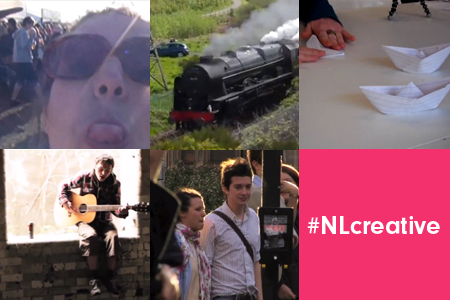This week, we invited writer, film critic and former Edinburgh International Film Festival director Hannah McGill to be the Northern Lights guest editor.
Hannah will be judging the Best Creative Award of £750 after submissions close on 21 June.
We asked Hannah to take a look at your creative submissions so far and give us her top picks…
Andy Williams - Scottish Memories: T in the Park
I can’t say that I necessarily share Andy’s enthusiasm for Scotland’s premier mudfest, but his film makes a very charming effort to convince me! His voiceover, relating his relationship with T in the Park and his memories of good times there, is straightforward and guileless, while the festival footage places the viewer right in the heart of the action he’s describing. It’s not a radical approach to the material, but it does create a nice contrast between lived and remembered experience: the festival as it lives in Andy’s memory, and as it exists in the sensory evidence of the video footage. And that relates to Andy’s words, when he speaks of being at ‘the boundary between reality and euphoria’. Just like Andy in the transport of the music, we’re both there and not there; inside and outside the experience. And without having to get mud thrown at us.
Christopher Ferguson - Oot and Aboot Kincardien Part 1
Christopher’s film points up an intriguing paradox about experimental film, which is to say that it often represents nothing more experimental than the effort to portray the everyday as it is. Ordinary daily life is full of listless longeuers, inconsequential scraps of action and unconnected events, yet films that contain such stuff tend to be seen as extreme and arty… So it is that Christopher’s cheery, upfront account of a little meander around his hometown marries artiness and artlessness, giving us a video diary-style piece that’s also a bit of a poem. It’s a nosy sort of pleasure to tag along on a stranger’s day out, and Christopher’s likability adds to the sense of intimacy and fun. But his observation of his surroundings also allows us to contemplate changing communities and the interaction of nature and industry. He also captures some delightful moments – there’s some beautiful use of light and landscape, and the passage of a train through the town provides the film with a quiet sort of crescendo!
Laura Dolan and Hannah Rastell - Dry Dock
This is a very simple piece of work that becomes much more than the sum of its parts through the clever use of a little visual motif: a paper boat. Film has an astonishing capacity to make us feel for senseless objects, and Laura and Hannah deploy that brilliantly – their little boat somehow has real personality! Effectively it becomes a character, and that emotional connecting point makes us notice the vague poignancy that clings to its environment, a dilapidated swimming baths. Attempts to make the boat sail on little patches of water create a nice and oddly moving metaphor for obsolescence and disuse… The directors also clearly have a splendid eye for visual detail. Reflections of coloured tiles and buildings in pools and puddles create amazing patterns. This is very confident and complete in its execution of its idea.
Julien Pearly - In a Gregorian Garden
This is more conventional in the sense that it’s framed around a song, but it’s ambitious in its use of space, light and camera movement. It both celebrates the band and the song, and delicately echoes the lyrical content, like a good music video should! A wrecked building (there are a lot of wrecked buildings in these entries!!) makes an amazing set, but the film also takes its performers into the live space of a public performance in a park; in doing so it takes us from somewhere bleak to somewhere lively and hopeful, which is a nice counter to lyrics that seem to be about the end of the world. So this has been thought through both visually and intellectually, as well as feeling pleasingly immediate and real.
Peter Mackie Burns - City
Impressions of working, shifting cities are a strong tradition in experimental documentary (Dziga Vertov’s Man With a Movie Camera being the essential example). This film does what such work does best: combines the universal and the highly specific; lets us spy on strangers; encourages us to recognise what unites and separates us; notices beauty in unexpected places. Like Christopher’s film, Peter’s work slows life down to let us bask in detail. Little moments of action – a very brief kiss at a pelican crossing, a snatch of a performance – take on added resonance.
Summing up… These films shared a generosity of spirit that was really invigorating – no pretentiousness or navel-gazing, which was a pleasant surprise to one who has seen a LOT of Moody Tone Poems About The Pointlessness Of Everything. The ones that sticks with me for its grace and simplicity is Dry Dock, and I also really loved the train passing through Kincardien. Both of these pieces of work achieve the simple miracle that makes us respond to art: they imbue everyday stuff with a little magic and mystery.
Huge thank you to Hannah McGill for taking the time to view submissions.
Next week, we’re looking at the Non-English submissions with guest editor Chris Young. Join in with another hashtag chat using #NLnonenglish, a Flip camera competition via Twitter, and lots more great submissions.
If you have a non-english submission under your hat, now is the time to get it in.
Until then, have you submitted to Northern Lights yet? Get involved!









